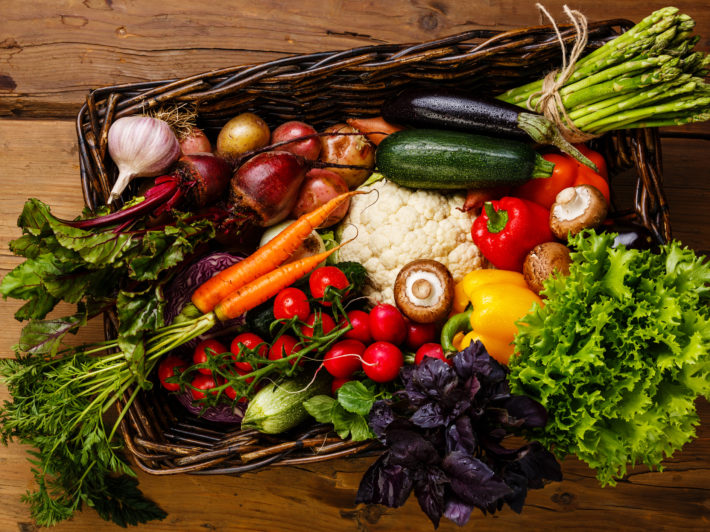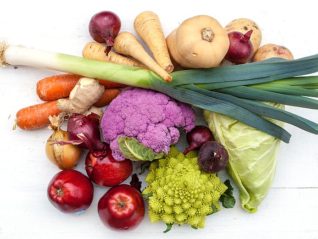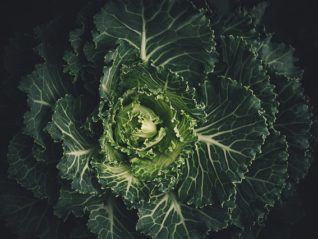
by Bianca Garilli, ND
It’s a well-known fact that cruciferous vegetables, including broccoli, Brussels sprouts, cauliflower, cabbage, and many others, should be a major cornerstone of any healthy, nutrient-dense diet. Not as well known, however, is that the bioavailability of some of the most desired nutritional bioactives from the Brassica vegetables, including isothiocyanates (e.g. sulforaphane), will vary depending on numerous factors. These factors can be broken down into plant-intrinsic and plant-extrinsic components.
Plant-Intrinsic Factors
Mainly found in cruciferous vegetables, glucosinolates (GL) are a large group of plant secondary metabolites and the molecular precursors to bioactive breakdown products (BDPs), with isothiocyanates emerging as a standout bioactive group containing health-promoting benefits. GLs vary in concentration depending on the type of Brassica plant being consumed, the part of the plant utilized (roots, flower, leaves, etc.), and the plant’s phase of development.1
Additionally, GLs need enzymes such as the myrosinase (MYR) family to transform GLs into their bioactive forms; for example, the GL glucoraphanin is transformed into the isothiocyanate, sulforaphane by MYR. MYR activity is influenced by pH, temperature, and presence of ascorbic acid and metal ions (such as iron) within the plant itself.1
In order for MYR to begin its work catalyzing conversion of GLs to bioactives, both MYR and GL must come into physical contact. MYR enzymes are housed in their own cells or intracellular compartments (depending on the plant), while GLs reside in other cells within the plant. The main way that MYRs and GLs come into contact is through the destruction of the cells’ walls where they are housed and subsequent merging of the cells’ contents. Once they make contact, MYRs are free to act on the GLs, but the conversion is now reliant on a multitude of possible extrinsic factors.
Plant-Extrinsic Factors
Extrinsic factors that play a role in the bioavailability of health-promoting compounds in Brassica vegetables include the industrial processing conditions, method in which the cruciferous vegetable is prepared, and the body’s own internal actions of mastication and digestion.1
Boiling, a common household cooking method and also the method frequently employed in the industrial process to bring cruciferous vegetables to consumers’ freezers and fridges, will affect the final bioavailability of nutrients, both through the temperature at which the vegetable is boiled and the length of time it is boiled. Most commonly, the industrial boiling process will result in a loss of GLs ~5-20% either from thermal degradation or through leaching of GLs into the boiling water.2 Steaming, on the other hand, may lead to increased GL concentration, possibly up to a 2-fold increase in cauliflower3 and 20-30% increase in broccoli.4-5 Results for the retention of GLs, MYR, and their breakdown products (BDPs) vary among other preparation methods as well, including microwaving, stir fry, air dry, and fermentation processing.
Mastication (AKA chewing) causes the merging of GLs and MYR, thereby facilitating the transformation process of GLs into BDPs; furthermore, chewing duration can interact with particular cooking processes to ultimately influence the outcome of the BDPs. For example, with the same amount of chewing time, it was found that broccoli steamed for 2 minutes released a higher level of sulforaphane than did raw broccoli or broccoli steamed for 3 minutes.6 Furthermore, cutting, chopping, or otherwise destroying the walls of the cells containing GLs and MYR during food preparation will cause these two molecular groups to combine, leading to the production of BDPs.7
MYR-like activity can also be produced by the gut microbiota in the colon; therefore GLs which pass intact into the digestive tract may still be modified and transformed in some cases into their BDPs, although this transformation may vary depending on the pH and composition of the gut microbiota and therefore, will be different from person to person.
Here are some tips, or take-home messages, from this complex area of research:
- Color your plate with plants from the Brassica family regularly
- Choose a wide variety of plant-based foods from various families and consume different parts of the edible plant components (ex: seeds, leaves, roots, flowers, etc.)
- Consume foods in various preparations to ensure a wide variety of bioavailability; this may include raw, steamed, grilled, baked, etc.
- Steaming appears to be superior to boiling when it comes to minimizing GL losses from Brassica plants
- Sharpen your cutting knives; chopping appears to support the MYR-GL transformation to bioactives in Brassica plants
- Eat slowly, chew well
- The whole is greater than the sum of its parts – there is a lot to be said about using the whole plant, in its natural form; we may not have all of the hard data at this point to understand the complex interactions between utilizing the whole– but it’s only a matter of time
- Like many other health processes, researchers are discovering that the gut plays a key role. These good “bugs” support GL transformation, so creating and sustaining a healthy gut microbial community is key
Citations
- Oliviero T et al. Isothiocyanates from brassica vegetables-effects of processing, cooking, mastication, and digestion. Mol Nutr Food Res. 2018;13:e1701069.
- Jones RB et al. Cooking method significantly effects glucosinolate content and sulforaphane production in broccoli florets. Food Chem. 2010;123(2):237-242.
- D’Antuono L et al. ISHS Acta Horticulturae: I International Symposium on Fresh Food Quality Standards: Better Food by Quality and Assurance. 2006;741:65–72.
- Miglio C et al. Effects of different cooking methods on nutritional and physicochemical characteristics of selected vegetables. J. Agric. Food Chem.2008;56(1):139-147.
- Gliszczyńska‐Świgło A et al. Changes in the content of health-promoting compounds and antioxidant activity of broccoli after domestic processing. Food Addit Contam. 2006(11):1088-1098.
- Sarvan I et al. The effect of chewing on oral glucoraphanin hydrolysis in raw and steamed broccoli. J Funct Foods. 2018;45:306-312.
- Barba FJ et al. Bioavailability of glucosinolate and their breakdown products: impact of processing. Front Nutr. 2016;3:24.
Bianca Garilli, ND
Dr. Garilli is a former US Marine turned Naturopathic Doctor (ND). She works in private practice in Northern California as well as running a consulting company working with leaders in the natural and functional medicine world such as the Institute for Functional Medicine and Metagenics. She is passionate about optimizing health and wellness in individuals, families, companies and communities- one lifestyle change at a time. Dr. Garilli has been on staff at the University of California Irvine, Susan Samueli Center for Integrative Medicine and is faculty at Hawthorn University. She is the creator of the Veterans for Health Initiative and is the current President of the Children’s Heart Foundation, CA Chapter.




